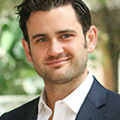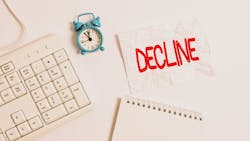DSOs open fewer hours per week than private practices during pandemic
According to research from the ADA’s Health Policy Institute, as of June 29, DSO practices were open fewer hours per week compared to their non-DSO counterparts. Sixty-nine percent of DSOs reported being open for the same number of hours as their pre-COVID schedule compared to a similar 68% of non-DSOs. However, 22% of DSOs were open fewer hours per week compared with only 16% of non-DSOs. This leaves 9% of DSOs and 16% of non-DSOs reporting they were actually open for more hours per week. Why have DSOs had a more negative impact on the number of hours worked during the COVID pandemic?
Some possible theories
One possible explanation is brand risk. If a privately-owned dental office were found to be a source of COVID transmission, it could suffer significant reputational harm in its local community. If the same fate were to befall a DSO-operated practice, then there would be a potential reputational risk to the other affiliated practices, especially if they shared the same brand. While there have been no official cases of COVID transmission reported in dental offices at this time, some DSOs may have made the strategic decision to lower their risk by working fewer hours, treating fewer patients per week, and/or placing more rigorous screening controls in place that limit their clinical schedules.
Another reason could be less strategic and more incidental; perhaps a decreased dental workforce is forcing DSOs to limit their hours. According to the same ADA research, as of June 29, 87% of surveyed practices reported that they were fully paying their teams and about 10% were paying only partially. Beginning in April we saw a rapid increase in the rehiring of dental team members, but there are signs that this is slowing. All dental practices rely on a team of front desk personnel, chairside assistants, and hygienists. If these furloughed employees choose to remain on unemployment or leave dentistry for another career altogether, then that could certainly impact a practice’s ability to operate. Anecdotal complaints from the dental community about staff turnover and the difficulty in finding new candidates supports this theory, however, it does not explain why DSOs would be disproportionately affected.
I’ll offer a final theory. The ADA research also notes that as of June 29, only about 65% of employee dentists reported being back to pre-COVID compensation. DSOs are more reliant on the employee dentist segment of the workforce than non-DSOs, so if these dentists are looking for new employment opportunities or choosing to remain on unemployment, then that could explain why DSOs are being forced to limit clinic hours. Of course, one could also reason that it is the DSOs working fewer hours that is causing employee dentists to report not being compensated back to pre-COVID levels. We have the proverbial chicken and the egg dilemma; there appears to be a correlation, but we cannot yet assert causation.
Chris Salierno, DDS, is the chief editor of Dental Economics and the editorial director of the Principles of Practice Management and Group Practice and DSO Digest e-newsletters. He is also a contributing author for DentistryIQ and Perio-Implant Advisory. He lectures and writes about practice management and clinical dentistry. Additional content is available on his blog for dentists at thecuriousdentist.com. Dr. Salierno maintains a private general practice in Melville, New York. You may contact him by e-mail at [email protected].
This article originally appeared in Group Practice and DSO Digest. To subscribe to this or any of the other DentistryIQ newsletter resources, visit dentistryiq.com/subscribe.
About the Author

Chris Salierno, DDS
Chief Editor, Dental Economics
Chris Salierno, DDS, is the chief editor of Dental Economics and the editorial director of the Principles of Practice Management and Group Practice and DSO Digest e-newsletters. He is also a contributing author for DentistryIQ and Perio-Implant Advisory. He lectures and writes about practice management and clinical dentistry. He maintains a blog to answer patient questions at ToothQuest. Dr. Salierno maintains a private general practice in Melville, New York. You may contact him at [email protected].
Updated Dec. 4, 2020
